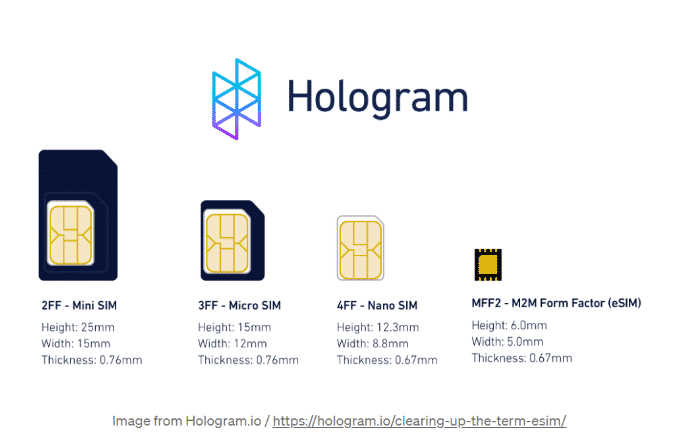Smaller, cheaper brands that use the Telstra network can offer eSIM phone plans, which is good news for you.
eSIM technology was launched in 2017 in Australia, allowing users to instantly activate phone plans without needing a physical SIM. Telstra was the first major telco to give smaller brands that use its network eSIM capability.
Now, you can choose from a larger, more competitively-priced pool of phone plan brands. You can compare a fabulous range of cheap eSIM plans here.
Top Alternatives to Telstra
What is an eSIM?
eSIM technology is the latest in the SIM card evolution. While traditional SIM cards are physical (most newer phones use the nano size), eSIMs are digital SIMs that activate and connect you to a network without needing a physical card.
SIM evolution. Source.
Purchasing and activating an eSIM takes place online. You’ll buy the plan from a website and receive a QR code to scan and download your plan profile. Then, follow the prompts to activate the plan. It’s easy and much quicker than waiting for a SIM card to be sent in the mail.
Benefits of an eSIM
- Faster activation than a physical SIM card.
- No need to go to a store to buy a plan.
- Use 2 numbers on one device (one for personal and one for business, for example).
- Switch phone plans easily and quickly to get the best price.
Why would Telstra open up eSIM to MVNOs?
It seems like keeping eSIM technology from its network resellers would be a big win for Telstra. So why open the technology up to its competition?
Well, that’s exactly why eSIM adoption has been slow. Early eSIM plans were mostly for wearables like smartwatches and some devices like tablets. Those types of plans don’t need telcos; not until the introduction of smartphones with eSIM technology.
It was only a matter of time before network owners Telstra, Optus and Vodafone would have to allow MVNOs to serve customers with eSIM plans. Add to that the ACCC’s concern over the matter, and you’ll get a huge telco like Telstra to change its eSIM policy.
Further, we saw Telstra face a lot of competition in its wholesale network market. Brands like Aussie Broadband and Macquarie Telecom, which were reselling Telstra’s network, jumped ship to Optus. The main reason was that Optus now resells its 5G network to MVNOs, while Telstra was still trying to keep 5G technology to itself.
Today, you can access 5G on many eSIM plans across a variety of brands that feature big data and great discounts.
